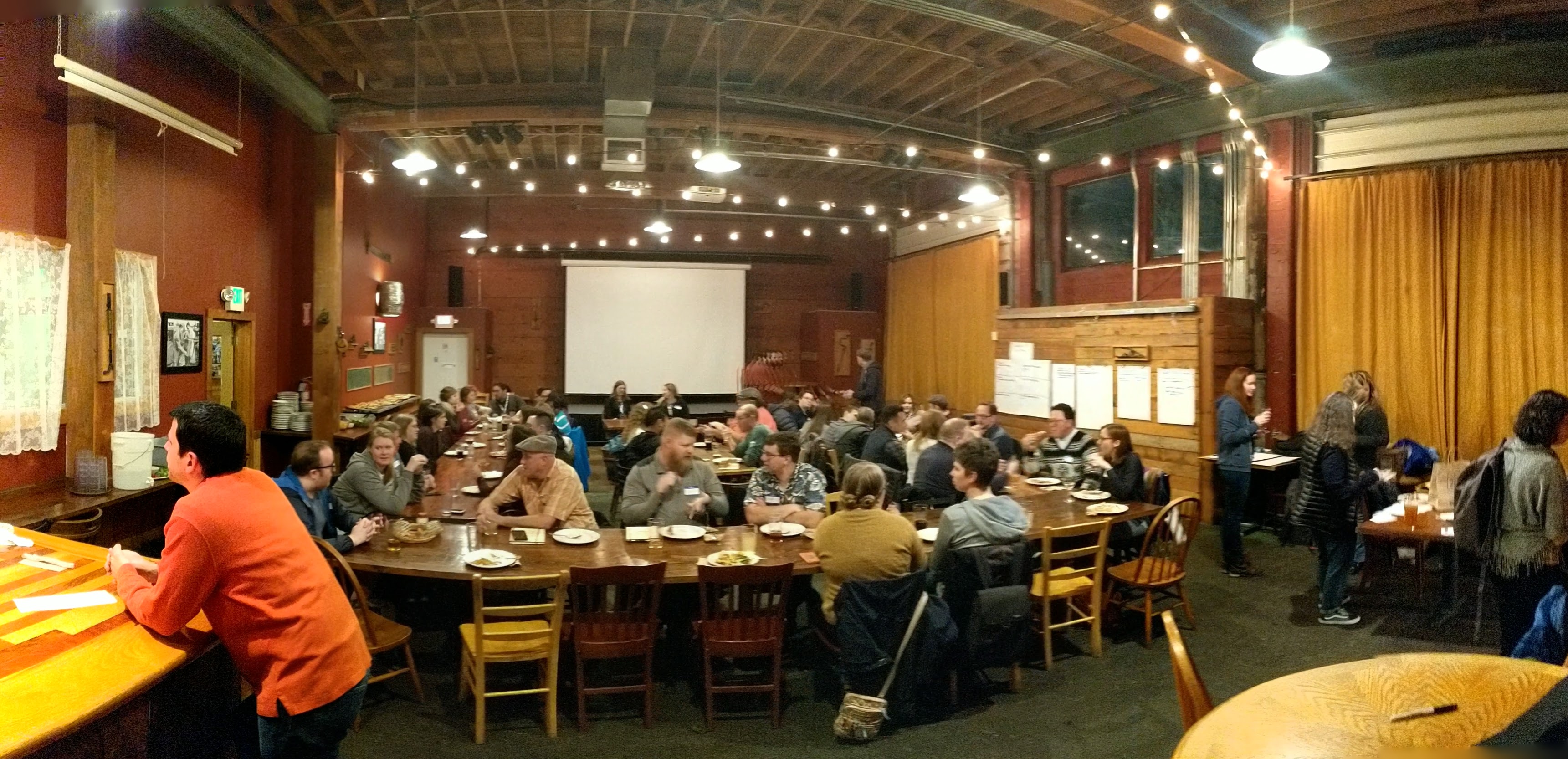6 ways to be a user adoption leader
Last week all five of the Portland, Oregon area Salesforce user groups met over dinner. It was a great way to network and share each user group’s goals for the year. We even had big pieces of paper on one side of the room for feedback from members of each group.

And each piece of paper had one thing in common: they all had a request for user adoption tips and tricks.
This isn’t new. It’s a common topic for user groups and blog posts. Every year I’ve attended Dreamforce I’ve heard countless conversations from admins on how hard it is to get colleagues to use the tool. Sales, Operations, Executives, Volunteers, and beyond: adoption issues span all departments and all types and sizes of organizations.
But instead of shrugging our shoulders at a common issue, what if we embraced it? What if we saw the challenge of user adoption as an opportunity to stand out and be a leader?
Today, I want to flip the script on the challenges we face with user adoption and suggest it’s not a user issue, but an admin issue.
User adoption is a big part of being an admin
User adoption isn’t just something you have to put up with as an admin, it’s something you get to champion. It’s a way you can stand out, grow your leadership skills, and flex those interpersonal muscles at your organization.
Below I outline just how to do this, using Salesforce’s own best practices for user adoption.
6 ways to be a leader with user adoption
User adoption might not be the most exciting part of the job description to some, but it is essential. Thinking of it as an opportunity to flex those leadership muscles can help.
Using Salesforce’s own 6 best practices for user adoption, here are 6 ways you can show off your leadership skills and stand out on the job while increasing your organization’s user adoption.
1. Salesforce says Leverage executive sponsorship; I say Show off your skills
Here’s your chance to network with the higher-ups. Start by learning who is on board with Salesforce, and who is not. Once you know who you can find support from and who you will need to convince, you can go about connecting with them accordingly.
Here’s an example of what this looks like: let’s say you just put the finishing touches on a cool new Dashboard. Show it off to both parties! The approving executive will be excited to see how their investment is being used. And the dissenting executive can see a real-life example of how the tool can help improve reporting, efficiency, and more.
And don’t just do it once. Continue to share these accomplishments. Perseverance is the key to success.
2. Salesforce says Train everyone; I say Empathize
This is a time to get to know your users and empathize with them, not just show them how the tool is supposed to work. By taking an empathetic approach, your users are more likely to trust you and invest their time in learning the tool.
I suggest by starting this process by helping them answer “what’s in it for me?” with Salesforce. Once they can answer this, training will be more motivating for their career than a required task would be.
However, I do understand that training can be a big undertaking. Make sure you take advantage of Trailhead if you’re short-staffed or short on time. It can really come in handy with those users who don’t need as much help or are already motivated to learn the tool.
3. Salesforce says Make it requirement for the job; I say Be a champion
You might not have ownership over this piece of the pie, but you can surely talk to HR about why this is important. If you can help create a data governance team or encourage them to add “using Salesforce” to the job requirements, Salesforce skills become one less thing for you to own, and another way to reinforce the organization’s investment in the tool.
Making the tool a requirement for all is a win-win-win for the investment, the organization’s growth and your position.
4. Salesforce says Empower users with data; I say Be a report hero
Alongside user adoption, reporting is one of the most discussed topics in my Salesforce circle. And custom reporting is a big part of why many businesses choose Salesforce. It’s a wonderful feature for organizations looking to grow and dig into their data.
But actually building the needed dashboards and reports seems to trip up many end users. They become overwhelmed and frustrated with all the time needed to build the reports. This is where an admin steps in to save the day!
Take the initiative and ask department heads for a meeting to help them understand the power of reporting that’s available to them.
Just like in best practice #2, you can help them get to the heart of the issue: ask them “what is your goal and how can we measure progress toward it?” Show them what data is at their fingertips, and what kind of reports you generate from it. I bet they’ll be grateful for the support and help.
5. Salesforce says Make each employee an expert in Salesforce; I say Help others get excited
One of the great things about being is a leader is helping others. Identifying your super users and encouraging them to get curious and knowledgeable about the tool is super easy with Salesforce.
Through training with Trailhead and building your own dashboards to monitor user adoption, you can take it a step further see who is rocking it and who needs help.
For those who are really getting into the tool, encourage them to become mentors to their struggling colleagues. And for those struggling, you can exercise your interpersonal skills by holding 1:1s with them to see how you can help them throughout the year.
6. Salesforce says Utilize gamification around the office; I say Connect in new ways
We all know Trailhead is “the fun way to learn Salesforce”, but the fun doesn’t have to end there. You can take this a step further. Think of what will make your colleagues get motivated to use the tool better. This isn’t just a chance to get a cleaner or more regularly used instance, but also a chance to show off your leadership skills and be known for motivating others in your organization.
Team up with HR or Operations to host a competition. Maybe the Sales team who keeps the cleanest data earns lunch, or the volunteer who tracks their hours regularly gets a mention in the next internal newsletter.
Blaze your trail
User adoption may be an ongoing challenge in many organizations, but it doesn’t have to be something you dread. By looking at user adoption through the lens of a way to flex your leadership skills, you can help yourself stand out. Did someone say MVP?
“Leadership is about making others better as a result of your presence and making sure that impact lasts in your absence.”
— Sheryl Sandberg, COO of Facebook and Founder of Leanin.org
Want more inspiring reads like this?
We see it as our job to help inspire our clients. We have 8 years of content. If you’re looking for another post that can help you enable your team with Salesforce, we suggest “My 5 favorite ways that Sales Cloud enables sales teams”.
















